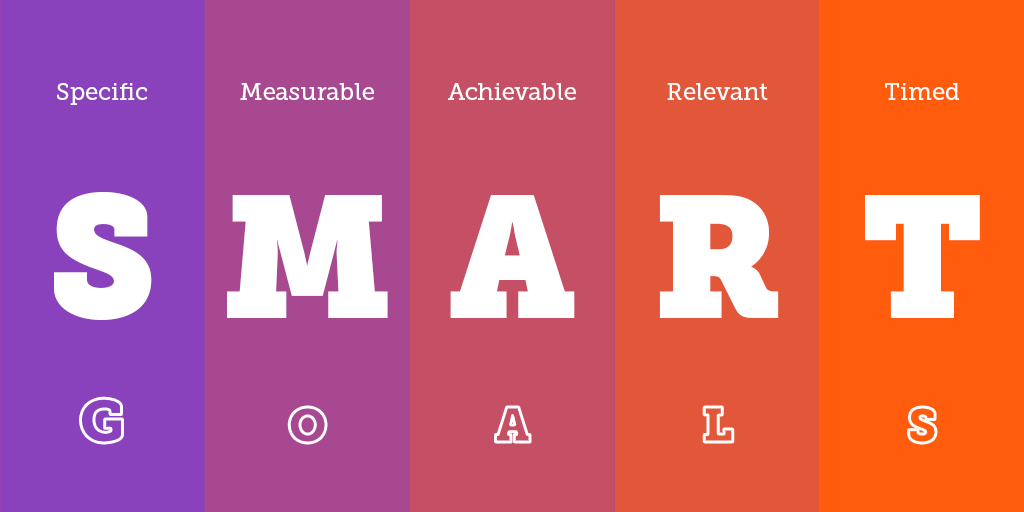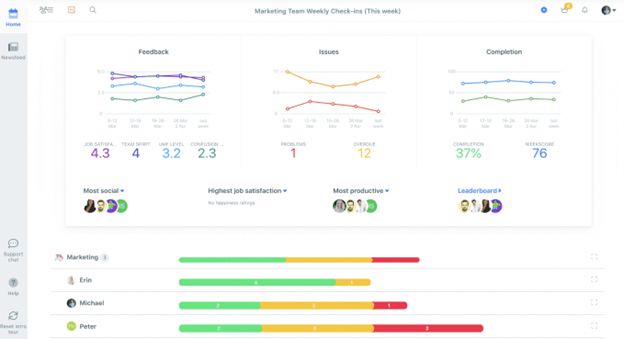At Team Compass we believe that the best thing any leader can do in 2023 is to be laser-focused on team goals. For over 10 years we’ve provided companies on all continents with goal-setting and team management software that has made them successful. We’ve seen what works and what not.
Based on that we’ve come up with best practices that can help any company – small or large – to be more productive and achieve more. Here is our blueprint for the success of your team in 2023. By implementing it right now in early January you’ll make sure your team wins against competition in this tough economic climate.
As a quick summary, here is what we know really works:
- Define the structure of good smart goals
- Break goals down by time periods and hierarchy levels
- Get buy-in and agreement from your whole team
- Set up tools and processes to share and track goals
- Automate the reporting of goal-tracking
What is Team Compass you might ask? It helps you set and track structured goals, keep track of activities, and get everyone working towards your company vision. You’ll make annual, quarterly and weekly goals visible to all team members. With weekly automated reporting you’ll align employee activities like tasks and projects with high-level objectives on company and team levels and see how everyone’s work drives the company forward. As a leader, you’ll quickly know what’s happening, make informed decisions, focus on what matters, engage and inspire, and measure employee satisfaction. You can try it out for free here.
What are good smart goals?
Let’s start from what are good goals. A good goal for a team is one that is specific, measurable, achievable, relevant, and time-bound (SMART). This means that the goal should be clear and well-defined, with specific criteria for success and a timeline for completion. A good goal should also be challenging, but not impossible, and should be aligned with the overall goals and objectives of the organisation.
SMART goals are:
Specific – Assigned to a specific person, team or department
Measurable – Visualised by a number, percentage or when exactly is it done
Achievable – Agreed on together with whole team that it’s doable
Relevant – Driven by higher level company, department or other teams’ goals
Timed – Annual, Quarterly, Weekly or with Due Dates

For example, a SMART goal for a marketing team could be “Increase website traffic by 20% within the next three months by implementing a social media advertising campaign and updating the website content.” This goal is specific, measurable (increase website traffic by 20%), attainable (with a focused advertising campaign), relevant (to the overall goals of the company), and time-bound (within the next three months).
Break goals down by time periods and hierarchy levels
It’s important to divide goals by their timing, from longer to shorter. Usually the longer the time period, the higher in the company hierarchy it stands. Here´are the time periods and levels that we’ve found work for most teams:
Annual / Company: If possible, set at least company level goals for the full year of 2023. Usually this is set and shared by the CEO. It’s the guidance for teams to set their goals on. Most commonly it consists of ambitious goals with some KPIs and metrics that show moving towards that goal as the year advances.
Quarterly / Team : This is one of the most important planning periods for team level. It’s led by team leaders or managers. Team members can then set their personal goals that align to the team. A quarter is not too long or short. Team goals can usually be any kind of SMART goals. Make sure though they are objectively measurable, so you can assess weekly, are you on the right course to achieve them.
Weekly / Personal: At the end of the day, all work is done by specific employees. We’ve found most teams run weekly meetings, calls or standups to communicate what they got done that week (Progress), what they plan to do next week (Plans) and were there any blockers (Problems). That’s usually called PPP.
Inside a quarter you can also add monthly or custom length projects and initiatives. These are usually flexible and can be either on team or individual level, lasting from a week to a quarter. Choose what works for your team the best. But even if you use project tracking, break it down into weekly goals and achievements so it can be discussed at weekly meetings.
The Team Compass goal-tracking software allows you to implement exactly that. You can break down goals between Company, Department, Team and Personal levels. And you can use Objectives, Key Results, KPIs, Projects and Initiatives, Plans, Progress and Problems as your goal types.
Get buy-in and agreement from your whole team
Alignment to move together towards set team goals can be achieved only if every employee understands and believes in them. That usually means coming up with the goals together as a team, discussing and brainstorming them.
To set team goals, you first need to understand what your team is capable of and what they are working towards. The first step in setting team goals is to identify the specific areas where the team needs to improve or where the team can make the greatest contribution. This might include areas such as improving customer satisfaction, increasing efficiency, or developing new products or services.This can involve talking to team members to get their input and ideas, as well as looking at the overall goals of the company and how the team and people fit into that.
Once you have a good understanding of your team’s capabilities and the direction the company is heading in, you can start setting specific team goals. Most importantly, keep talking to your team members at every step of the way. They must feel they helped to set the goals.
It’s important to communicate the goals clearly to the team and make sure everyone understands their roles and responsibilities in achieving them. This can be done through team meetings, one-on-one discussions, and other communication channels.
Once the goals have been set, it’s important to create a plan for achieving them. This might involve breaking the goals down into smaller, more manageable projects and tasks, and assigning those tasks to specific team members or sub-teams. The plan should also include a timeline for completing the tasks, as well as regular check-ins and progress updates to ensure that the team stays on track.
It’s also important to provide the resources and support that the team needs to achieve its goals. This might include training, tools, equipment, or additional staff, as well as regular feedback and coaching to help team members develop their skills and abilities.
Set up tools and processes to share and track the goals
To make sure your team is moving forward towards the goals you need to choose how you track them. Usually it has two parts.
First, it’s best to run weekly team meetings where you go over all the goals progress on team and personal level. You start from bigger objectives, then look at metrics and KPIs progress, the projects and initiatives, then personal Plans, Progress and Problems. That’s the best practice how most teams run their weekly standups.
Second, it’s best to use a special tool to run both the goal-tracking, regular automated reporting and use for presenting during team meetings. You can start with a simple spreadsheet, but it’s better to use special tools like Team Compass.
Goal-setting software is a type of software that helps individuals and teams set and track their goals. The specific features and functionality of goal-setting software can vary, but some common components of these programs include:
Goal planning and tracking: This allows users to define their goals and create a plan for achieving them. This might include setting specific, measurable, achievable, relevant, and time-bound (SMART) goals, as well as breaking down those goals into smaller, more manageable tasks.
Progress tracking and monitoring: This helps users track their progress towards achieving their goals, and provides regular updates and feedback on their progress. This might include features like progress bars, charts, and graphs, as well as alerts and notifications when goals are not on track.
Collaboration and sharing: This allows users to share their goals and progress with others, such as team members or managers. This might include features like team calendars, shared task lists, and collaboration tools like chat and messaging.
Reporting and analysis: This provides users with insights and data on their goal-setting and progress, and allows them to analyse their performance and identify areas for improvement. This might include features like detailed reports, data visualisation tools, and custom dashboard views.
Overall, the specific features and functionality of goal-tracking software will vary depending on the specific program, but these are some common components that you might find in many of these types of programs like Team Compass.
What to look for in goal-tracking software?
When choosing goal-setting software, there are a few key things to look for to ensure that the program is a good fit for your needs. These might include:
Ease of use: It’s important to choose a program that is easy to use and navigate, so that you and your team members can start setting and tracking your goals quickly and efficiently.
Flexibility and customization: Look for a program that allows you to customise and tailor your goal-setting and tracking to your specific needs and preferences. This might include the ability to set different types of goals, create custom templates and frameworks, and adjust the settings and features to suit your specific goals and objectives.
Collaboration and sharing: If you will be working with a team, look for a program that allows you to easily share and collaborate on goals and progress with others. This might include features like shared task lists, calendars, and communication tools like chat and messaging.
Analytics and reporting: Choose a program that provides detailed analytics and reporting on your goal-setting and progress, so that you can track your performance and identify areas for improvement. This might include features like data visualisation tools, customizable dashboards, and advanced reporting capabilities.
Overall, when choosing goal-setting software, it’s important to look for a program that is easy to use, flexible, and provides the tools and features you need to set and track your goals effectively.
As a summary, setting team goals is a crucial part of effective team management. It can help your team to improve their performance and make a greater contribution to the organisation.
We suggest you give Team Compass a go to set, share and track your 2023 goals. It’s free to try. And if you have any questions about setting good smart goals, reach out to us and we’ll help you!
May 2023 be great for you as a leader and your team as a whole!
